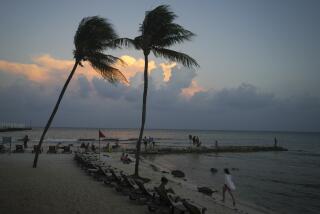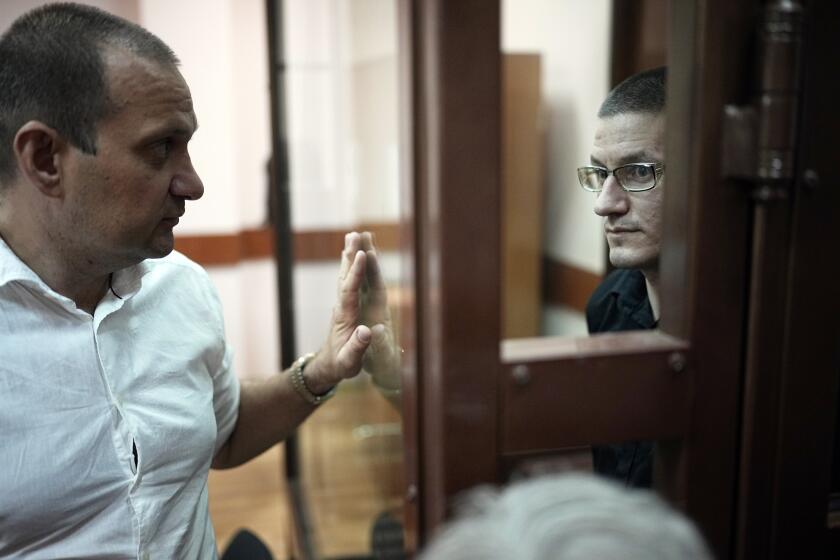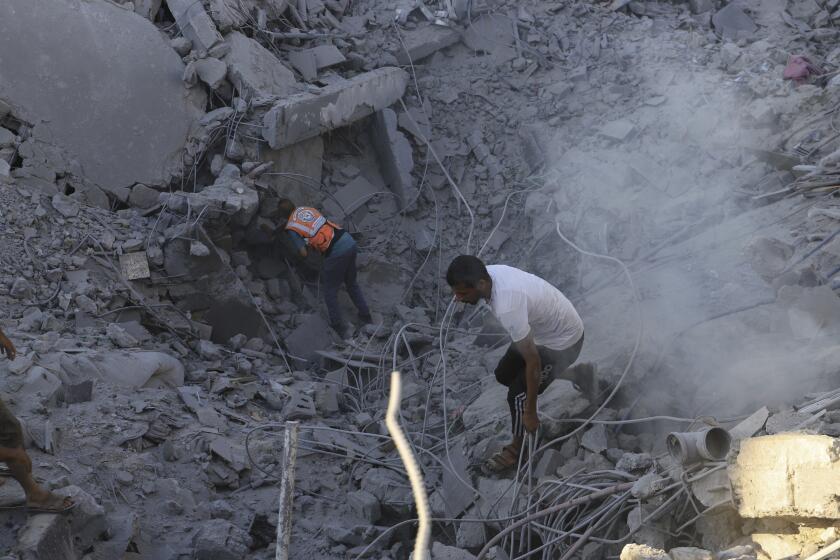Media : Rwanda War Isn’t Just Horrific, It’s Telegenic : Many observers are convinced that the Central African conflict has magnetized the globe largely because of TV.
Gary Strieker wasn’t quite sure he wanted to see the event that was unfolding, but he kept his camera focused on the four Tutsis who had been stopped in Rwanda and were sitting together under a tree.
Before long, a group of Hutu villagers wandered over and began beating the four men and women with sticks. They beat them until they were dead. Then, as Strieker’s camera rolled on, several Hutu boys beheaded the corpses with their machetes and wiped the bloody blades on their pants as unemotionally as if they were doing the laundry.
Strieker, CNN’s Nairobi bureau chief and a former Citibank executive in Africa, has been covering wars from Liberia to Somalia for the past nine years but has never seen a conflict like Rwanda’s, in which death is so intimate and filmable and is carried out, neighbor against neighbor, in such a casual manner.
*
Still, he has had occasion to wonder, as have other Africa-based journalists, why the world found this particular tragedy so compelling while many other African conflicts--particularly ones that do not involve a Western power--earn nary a mention in newspapers and on TV in Europe and North America.
Last October, more than 100,000 Tutsis were murdered in Burundi, Rwanda’s neighbor, with rampaging mobs wielding machetes, but the slaughter received no more than a paragraph or two in most newspapers. And while scores of journalists have chronicled the plight of 300,000 Hutu refugees on the Tanzanian-Rwandan border, other huge concentrations of misplaced Africans on the continent have never been covered at all.
“Certainly the sheer magnitude and vividness of the massacre explains, in part, why Rwanda has been in the news while other African tragedies have gone by almost unnoticed,” Strieker said. “But the more I think about it, the more I think it has a lot to do with the presence of so many journalists in South Africa for the election.”
*
Most observers agree. To them Rwanda says a great deal about the vagaries of covering Africa and the power of television in determining which events receive wide coverage and which don’t. Stories that confirm the notion of Africa as a primitive place--be it the brutality of Uganda’s deposed dictator Idi Amin or rebels cutting off the ears of Liberia’s late leader Samuel Doe--traditionally have found a broader audience than those dealing with political, economic or social issues.
By the time Rwandan bodies started floating down the Kagera River and into Lake Victoria, in May, two widely covered events in Africa had become journalistic non-events: The Americans had pulled out of Somalia, ending interest there although the killing continued, and the huge international press corps that had descended on South Africa expecting to cover a civil war found little left to report when the elections came off peacefully.
Rwanda was where everyone headed. Unlike those in Burundi, where the October massacres were carried out in countryside that was difficult to reach, the killing fields of Rwanda were accessible. They reached from Kigali, the capital, to the interior where the Tutsi-dominated Rwandan Patriotic Front assigned press officers to border crossings to escort journalists to massacre sites. Convenience of access became an important element in the widespread attention Rwanda would receive.
“The killing in Rwanda is no different than what has gone on for years, with machetes, with neighbors slaughtering neighbors, in Rwanda and Burundi,” said Mohammed Amin, Africa bureau chief for Reuters Television and a legendary combat cameraman in Africa.
“I can remember sitting here 15 or 20 years, trying to ‘sell’ a story on massacres in Rwanda or Burundi to some editor in London, and there’d be no interest. They wouldn’t want to spend the money to cover the story. No one cares about more killing in Africa, they’d say.”
But Amin believes times have changed because the electronic media, with their instant satellite communications, now often dictate what African stories receive worldwide attention. It is the vivid TV images from Africa that set the news agenda and give the initial exposure to an event that eventually leads to an international humanitarian or military response.
Amin, who lost his left arm after being wounded in the Ethiopian war three years ago, recalls TV’s role in exposing the 1983-85 famine in Ethiopia. The government had denied its existence, and a handful of newspaper stories on the famine had received scant attention. NBC and the BBC initially rejected a five-minute piece Amin had done for Visnews on starving Ethiopians. But when the BBC did air the piece on its noon news, as a virtual filler on a slow news day in October, 1984, the international reaction was immediate and overwhelming.
Journalists from around the world began pouring into Ethiopia, and within days international relief agencies had mounted one of the largest humanitarian efforts in African history. The famine, which claimed hundreds of thousands of Ethiopian lives, was one of the most widely covered African stories of the decade and played a role in the eventual downfall of Ethiopia’s Communist government.
*
“Ethiopia was similar to Rwanda today,” Amin said, “in that the pictures create the demand for more pictures and the news coverage feeds on itself as more journalists write more stories that end up eliciting a response from the United Nations or whomever. But I think it’s quite possible that if there hadn’t been such vivid pictures from Rwanda early on, the massacre might have gone largely unreported.”
More to Read
Start your day right
Sign up for Essential California for news, features and recommendations from the L.A. Times and beyond in your inbox six days a week.
You may occasionally receive promotional content from the Los Angeles Times.






